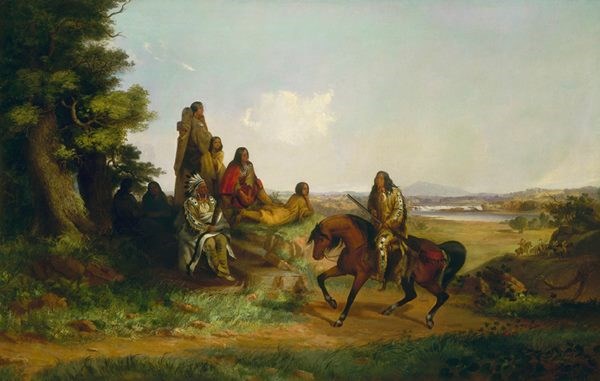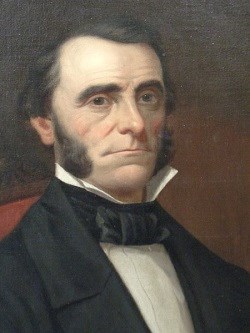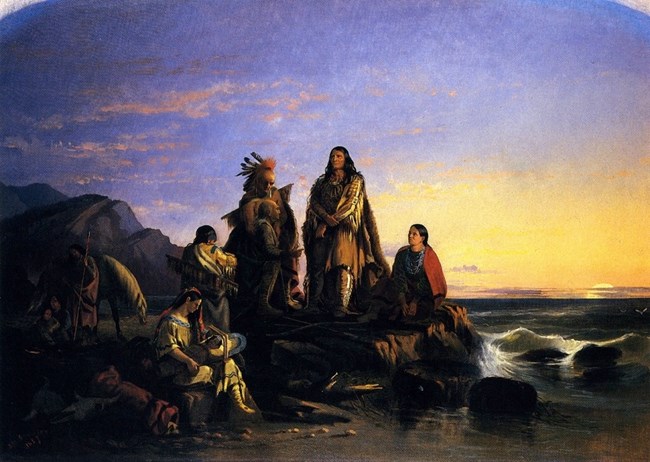Natawista Iksina (Medicine Snake Woman)
Painting by John Mix Stanely, 1853. U.S. Department of State. Accession # 1965.0053 At the time, around 1840, Natawista and Alexander Culbertson’s marriage was not unusual. Such unions proved beneficial to both husbands and wives. Traders like Culbertson secured trade ties with their wives’ families and tribes, while the wives’ people in turn gained access to and a degree of control over the husbands’ trade goods, relationships, and networks. 
© Fred MacVaugh This is how it was for Natawista. During her long marriage to Culbertson, a man respected by the Upper Missouri tribes as well as the U.S. government, Medicine Snake Woman came to serve as a powerful voice for and representative of her people. In 1851, for instance, Alexander accompanied a delegation of Assiniboine, Hidatsa, Mandan, and Arikara from Fort Union to Fort Laramie in present-day southeast Wyoming. Although the Blackfeet did not attend the Great Council at Horse Creek, some believe Natawista accompanied her husband and through him represented her people. Why? Because the 1851 Treaty of Fort Laramie designated territory for the Blackfeet in the Upper Missouri country. 
The Athenaeum (http://www.the-athenaeum.org/) What Lewis and Clark had learned earlier from Sacagawea, Governor Stevens learned too from Natawista: a woman’s presence, intelligence, and good humor could assure peace and security in times and places where wariness among men alone might have led to war and death. Considering the implications, one wonders, “What would life have been like at Fort Union without the presence of women such as Natawista or Deer Little Woman, the Assiniboine wife of Fort Union’s later Bourgeois Edwin T. Denig? What about life in the country and world today?” |
Last updated: April 24, 2021
